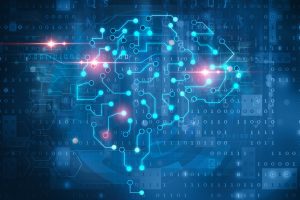Unless you’ve been hiding in a cave for the last decade, you’re certainly aware of how the Internet-of-Things (IoT) has begun permeating every facet of our lives. From the vehicles to phones, everything we use and everything we do is becoming more and more connected. IoT is the next level of global networking, reaching farther and deeper than ever before. As it does, it’s enabling a paradigm shift in how organizations must manage their operations.
Though the seeds of IoT began in a many different industries, it has finally and fully migrated to the world of power distribution. Whether you’re a specifying engineer, designer, system integrator, contractor, or anyone else working in the electrical field, you need to keep abreast of this fast moving evolution. IoT for power promises not only to make your job more efficient, it will also give you a competitive edge.
Ultimately, this is because your customers are becoming very aware of its advantages. They may already be demanding these capabilities in the solutions you’re designing, building, or installing for them. Why? Because whether it’s for a large office building or hotel, a critical facility such as a data center or hospital, or an industrial plant, the benefits of an IoT-enabled power distribution solution are seemingly endless. Let’s take a quick look at some examples.
Making power safer and more reliable
Smarter devices connected over various communications options, including wireless, are making it easier and more affordable to locate metering and monitoring in more places. This has opened a floodgate of new, powerful applications. For example, continuous thermal monitoring helps avoid fires by identifying faulty or loose connections. Unlike scheduled IR thermography, this solution works on a 24/7 basis, catching thermal anomalies that might otherwise be missed. Similarly, insulation monitoring in hospital operating theatres protects patients by helping operations staff immediately identify and clear ground faults in medical equipment.
Data from connected devices across an entire power distribution network enables operations teams to keep their hand on the pulse of their infrastructure. Automated alarms can alert personnel before a risk condition causes equipment damage or an outage. As electrical systems and conditions have become more complex, advanced power events analysis is making it faster and easier to isolate root causes. Alarms can be quickly categorized, while the direction and propagation of disturbances is visualized on a timeline to help trace their origins. And as loads and controls become more digitized, they also become more power sensitive. Fortunately, power quality analysis tools are now able to capture and visualize every type of condition, delivering compliance reports with simple pass/fail indicators that make it easy to stay on top of the health of the electrical system.
Simplifying control of energy and operation costs
Energy management tools have progressed a lot in recent years. Energy meters with extremely high accuracy are now available, with cloud-based energy analytic tools that make it simple to identify utility billing errors and to sub-bill or allocate costs to tenants or departments. The energy performance of different facilities or processes can be accurately compared using benchmarking, normalization, and modelling, helping reveal waste or equipment problems. Detailed energy usage analysis using rich dashboards helps find and prioritize opportunities for conservation efforts, set baselines, then validate post-retrofit savings.
Smart IoT-enabled equipment is helping maintenance teams transition from a preventative to a predictive approach. Embedded intelligence continuously monitors the condition of circuit breakers, UPS systems, PQ mitigation equipment, and batteries. Analytic reporting tracks equipment conditions, predicting remaining lifetime and other indicators. In this way, risk conditions can be caught earlier, and maintenance can be done on an ‘as needed’ basis only, saving time and cost. And for organizations without adequate in-house expertise or resources, cloud-based apps enable remote support from contracted expert services.
Designing an IoT-enabled solution
It seems there are so many ways that IoT is helping improve power distribution, defining the best ‘digital application’ may seem a daunting task. Obviously, the application must be selected according to your customer’s needs. But you also need to understand how to implement it by taking into account system design constraints, such as communications, data recording and timestamping, time synchronization, data processing, and cybersecurity requirements.
The next step is to ensure the right products are selected to comply with specifications and architectural constraints. Building blocks at each level connect at the facility level for ‘edge control’ applications, as well as to cloud-based analytics and services.
Fortunately, Schneider Electric is here to make this all easier for you. Our IoT-enabled EcoStruxure™ Power is a secure, flexible solution platform designed to address any or all of the applications discussed above, and more. EcoStruxure Power will help your customers optimize safety, reliability, and efficiency across one or more facilities while it helps you deliver solutions faster and on budget. Even better, you can download our new design guide “Digital Applications for Large Buildings & Critical Facilities” to help you define and build each solution in a few simple steps.




Conversation
where from we can learn more , do you conduct IOT courses
As of now, we are not offering any IoT courses yet. We do have the digitization of electrical distribution whitepaper.You can sign up to receive it here: https://www.schneider-electric.com/promo/us/en/getPromo/A05615
Thanks,
Markus